Walking through the beautiful town of Saarbrücken in Germany from my hotel, I'm heading to the famed artist and photographer Fred George's house, which is about two and a half miles away; the busy town life slowly changes into a quaint road that seems to be a neighborhood but still has the feeling of the town with a few shops present.
Today, I'm sharing a story about my April 2024 visit with Fred George, an accomplished artist and trained architect living in Saarbrücken. Fred has been a long-time friend of mine and even a longer friend of my co-author, Andrew Wakeford, who originally introduced Fred to me. His long silver hair, friendly smile, and well-used clothes bear the scars of his past work with paint, glue, and other materials that adorn his artistic creations.
Many words can describe Fred. First and foremost, he is a genuinely fantastic person. But his greatest asset is his ability to transcend and acknowledge the world's political unrest, wars--and human injustices, such as genocide, especially what is going on in Ukraine and now Israel and the Gaza Strip. He openly and freely breaks the unspoken barriers using art. He is unafraid to apply his creative genius, even if controversial, to his sometimes massive sculptures, photography, and music to call out today's unjust and terrible events to the world.
Fred is a politically motivated artist originally from New York. In the 1980s, Fred was one of the most sought-after skyscraper building photographers in New York and has photographed nearly all of them for real estate sales inside and outside, using helicopters to get the shots. He has many exciting stories, but the one that comes to the forefront is his professional interaction with Donald Trump. In the late ninety’s Fred and his crew were photographing three Trump properties in Miami.
"When I presented the photos to Trump in person and our (agreed) invoice, he looked at it and said, "Great Photos and Great work. But if you want to get paid, take 20% off it, or I'm not paying it."
Trump said, "If you disagree, sue me! I'm not paying without the discount."
Seeing a no-win situation, Fred accepted Trump's terms to keep his cash flowing and avoid a lawsuit.
Trump still owes FRED GEORGE Photography ten thousand dollars.
Fred continued doing building photography and made his success there. Still, his longing for something more in his life caused him to continue experimenting with art, using it as a statement, and expanding on a vibrant career that spanned more than 30 years. Having started his artistic journey with studies in photography and sculpting, his resulting lifelong obsession with expression and creation has culminated in an eclectic array of artwork and accompanying accolades.
Fred credits his uniqueness in life with this story, for he had a severe motorcycle accident in England that further changed his life perspective. Fred states,
"I was hurt bad, arriving at the hospital, I was pronounced dead and went to heaven. After a brief conversation with God, I was sent back to earth to do my time and deal with the blues.”
Eventually, Fred was revived and saved and had a long recovery but he made it!
At 71, Fred states, “I'm still serving my time, and now I live in Germany.”
Approaching Fred's house, you instantly see a collage of various art statements on his property in varying stages of completion. As I get closer, in front of his house is the Mosaic Peace Sculpture.
This towering Sculpture is almost as tall as his three-story house and has a rich history of past uses. It now sits on his land and signifies Fred's feeling of peace in our world, which is fragile and changeable. A perfect example is the war in Ukraine that started on February 24, 2022. Several months before the war started, Fred had a feeling and decided to redo and misalign the peace sign so it looked off center and not right. Ironically this was done BEFORE the Ukraine war started.
Fred assembled his team together and credits them for making it possible. The team members are: Mike Robillard, Andrea Muller, Emma George Morrisse, Ukraine refugee children, other neighborhood kids. Engineering was done by Prof. Dr. Ing G. Schmidt-Gönner, and the Steelwork by Walor Stahlbauand and Christine Simon.
Fred felt that he needed to visually show that world peace is fragile and can change as it did in Ukraine in a moment. The Mosaic Peace Sculpture is draped in the Ukrainian flag with simulated blood stains on it and is a constant reminder of this terrible war. Fred knows firsthand how hard the Ukrainian people have suffered. Since the war started, he opened up his home for many to live there while they figured out how to rebuild their shattered lives. Fred is also not bashful about his dislike of Putin and all he stands for.
But there's much more work to see. Fred enthusiastically greets me at the gate and lets me into his cluttered yard, where the spring grass is getting long, and the sky is changeable between the sun and an occasional shower.
There, I see an extraordinary and unusual art piece that resembles an electric chair. "Hey Rob, check out this is Putin's electric death chair. He deserves this." The chair is made of beautifully stained wood and sits uncomfortably upright with a wire screen designed to fit squarely into the back of the occupant. It's connected to a vast array of solar panels beside the chair on the ground. Closer inspection reveals much thought and detail in its design. I ask, how does this work? Fred quickly explains,
"Imagine getting Putin and strapping him in this during the darkness of night and letting him think about his fate. The solar panels would be set upward in the real display, forming a cross and aimed at the morning light. As the sun slowly rises, the solar panels begin collecting the sunlight, building energy--and voltage by high noon, he's fried."
The symbolism of this art is a powerful statement, even though there is not enough solar energy to cause harm.
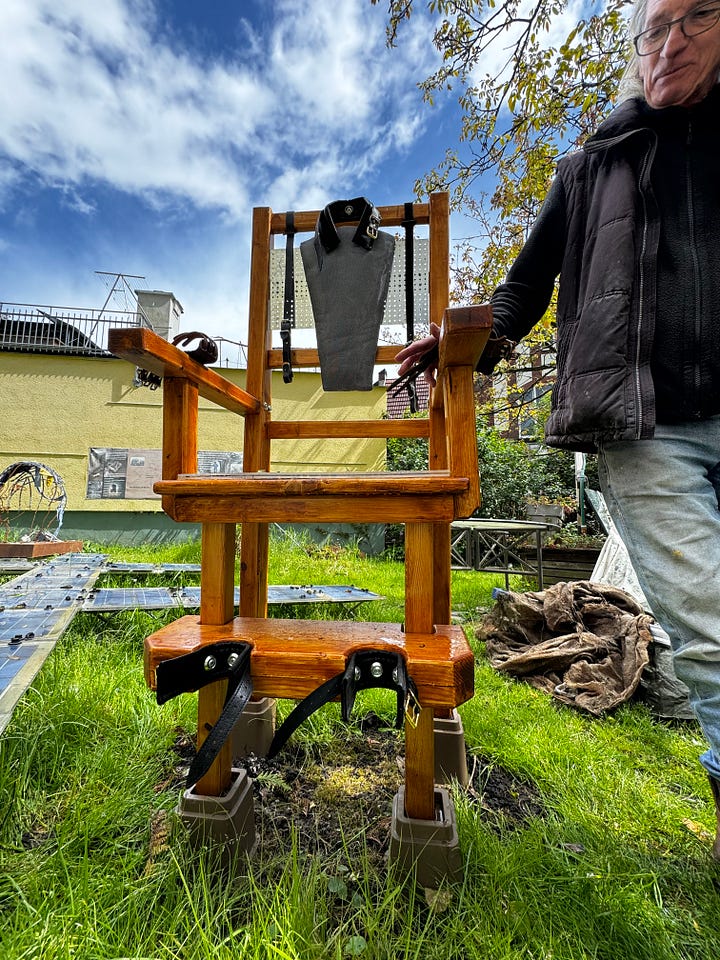

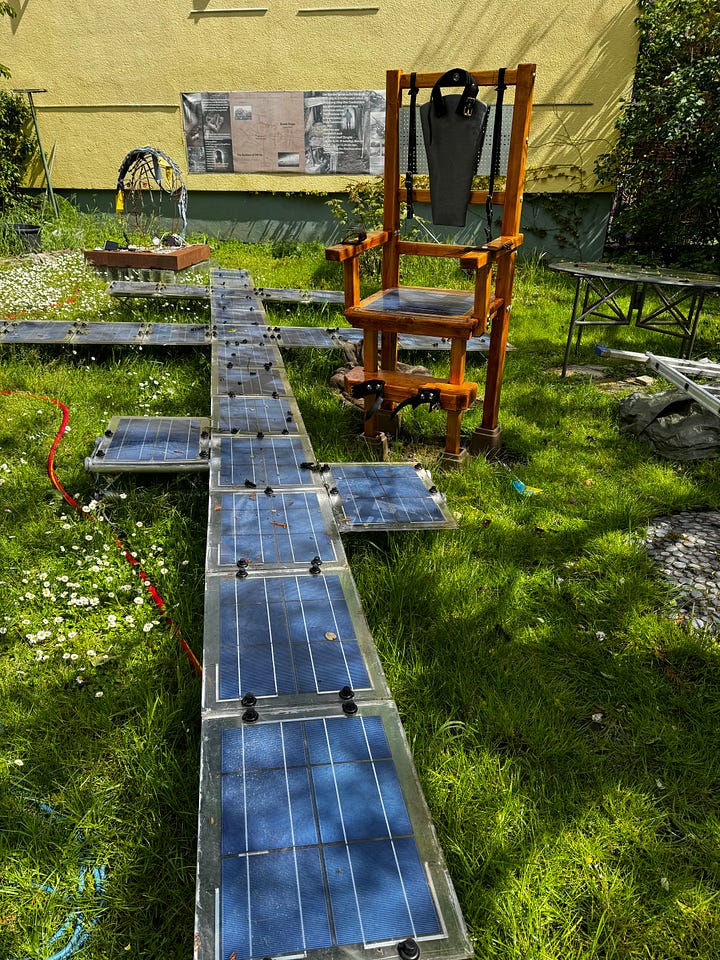
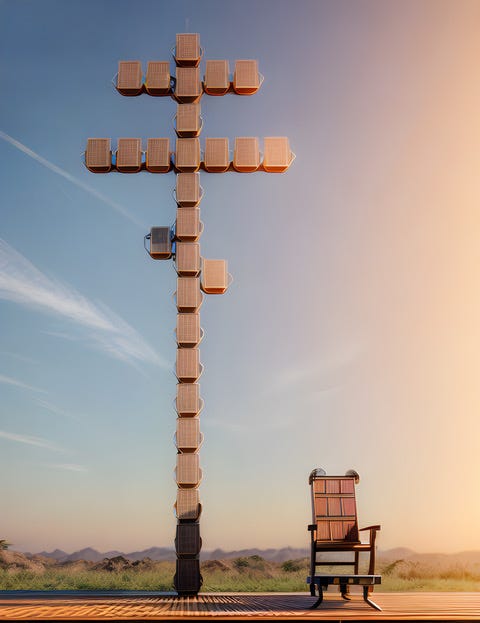
Moving about the yard, Fred points out that we are standing above an old WWII bunker used for protection during the war. "They were bombing all around here, and the people who previously lived here were able to scurry to safety using the underground bunker." We took a quick tour, climbing down deep into the ground. It was dark and scary and reminded me of being in an Egyptian tomb. But this eighty-plus-year-old bunker saved many lives in this area as the war above raged and extended almost one city block long.
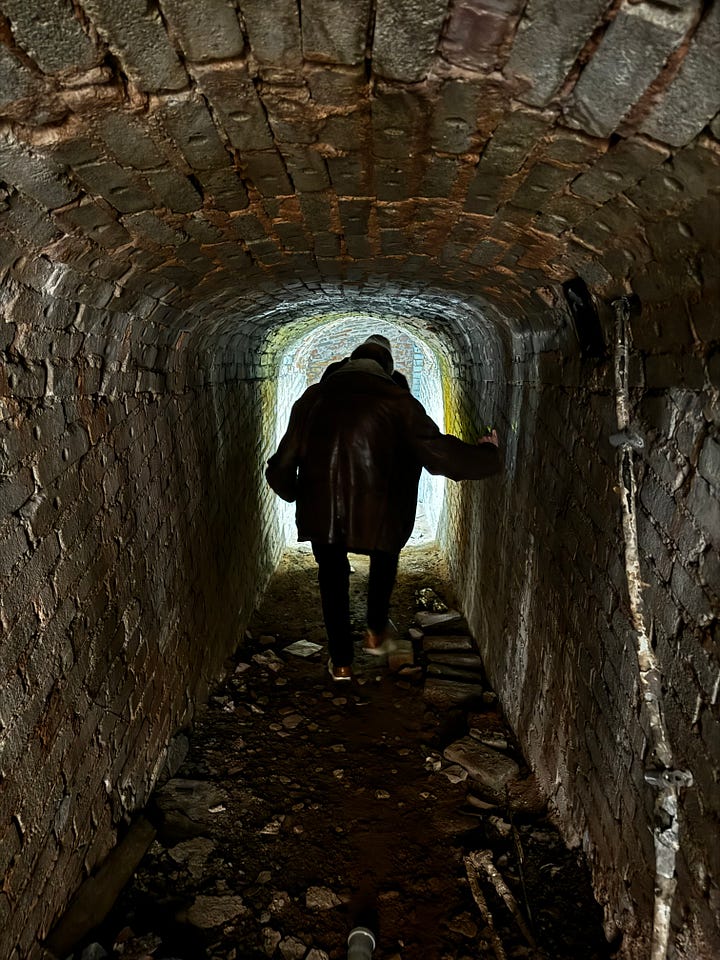
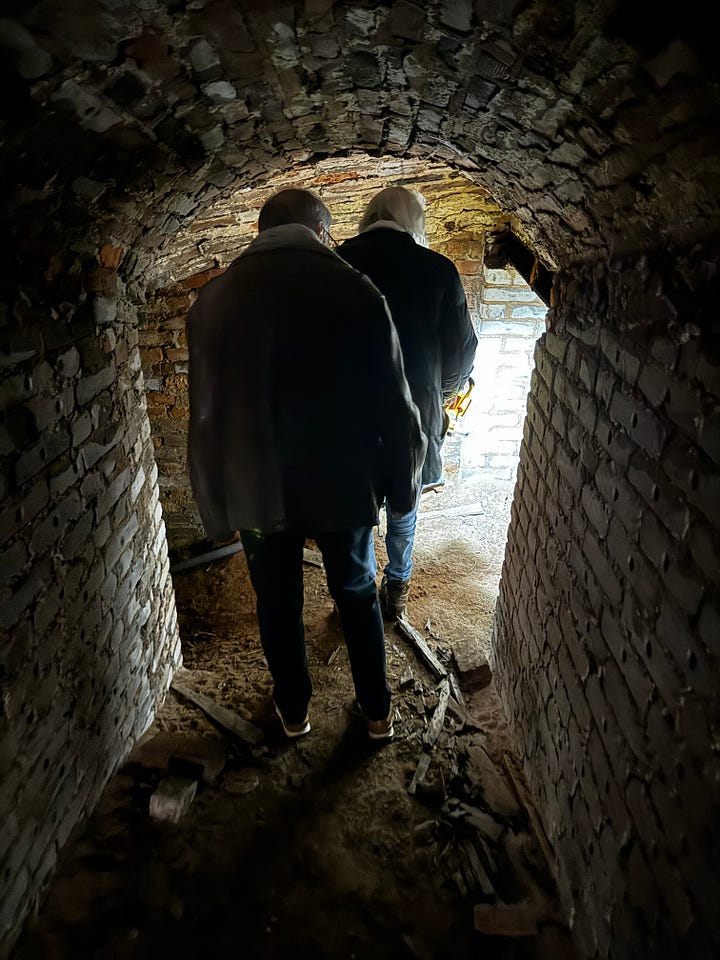
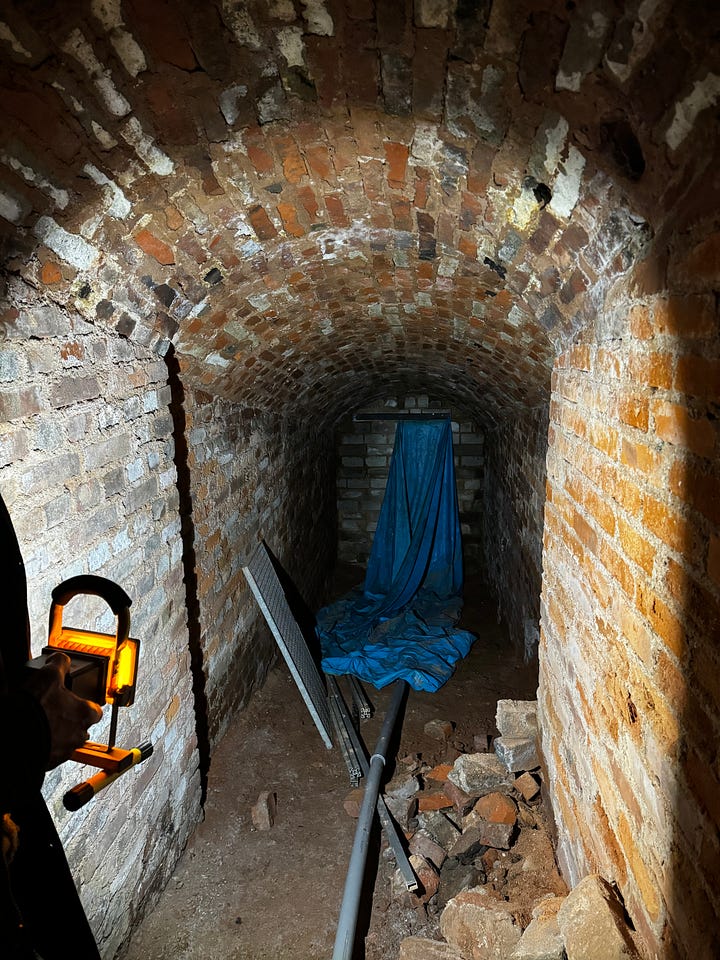
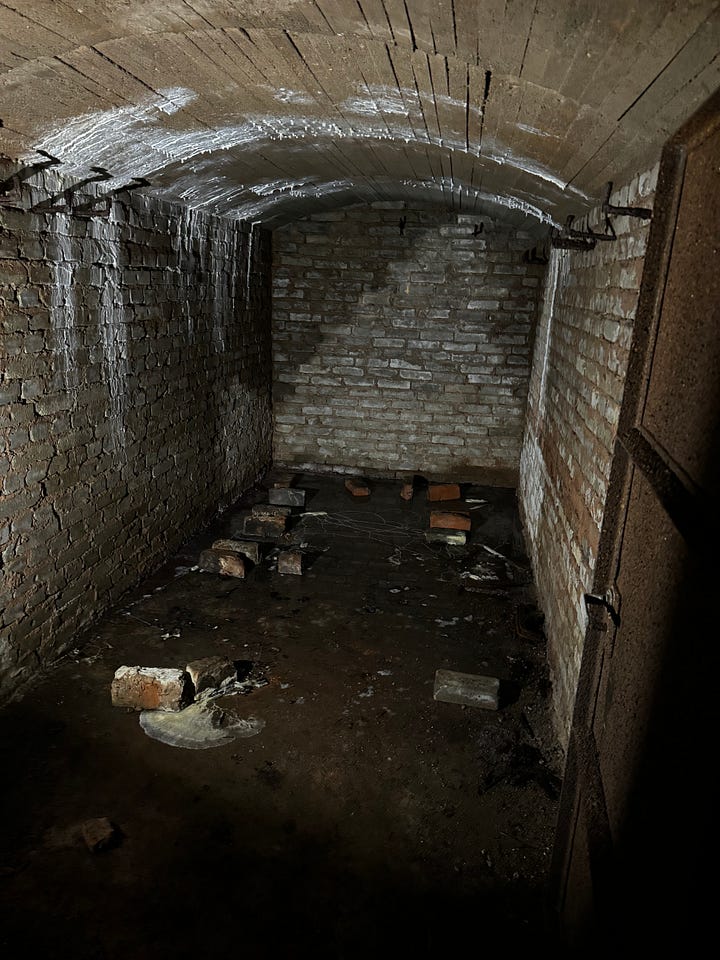
Fred's political art statements continue as I notice another wire sculpture of the head of Vladimir Putin draped in the colors of Ukraine. Fred states, "This Sculpture represents the suffering of the Ukrainian people. "When it was complete, we set fire to the flag of Ukraine and took a photograph to emphasize the suffering of the people there."
Fred invites me into his house to show me more. I've been here before, but now it's less cluttered. His photographs, sculptures, music studio, and various projects and materials are scattered in every open space. His iconic photograph of the New York World Trade Center the day after September 11th catches my eye. Fred managed to get through the barriers and photographed firefighters working to find survivors. It was his photo of a lifetime and quickly became syndicated worldwide. Seeing it again evoked a sad emotion, reminding me of today's world.
Separating all the floors in his house is a circular staircase that now contains a towering sculpture of interconnected guns shaped into a large cross. "Bosnia," Fred states, "we got all these discarded AK-47 guns from the war in Bosnia and were all used to kill people there. It's a sad and striking reminder of how much suffering went on there."
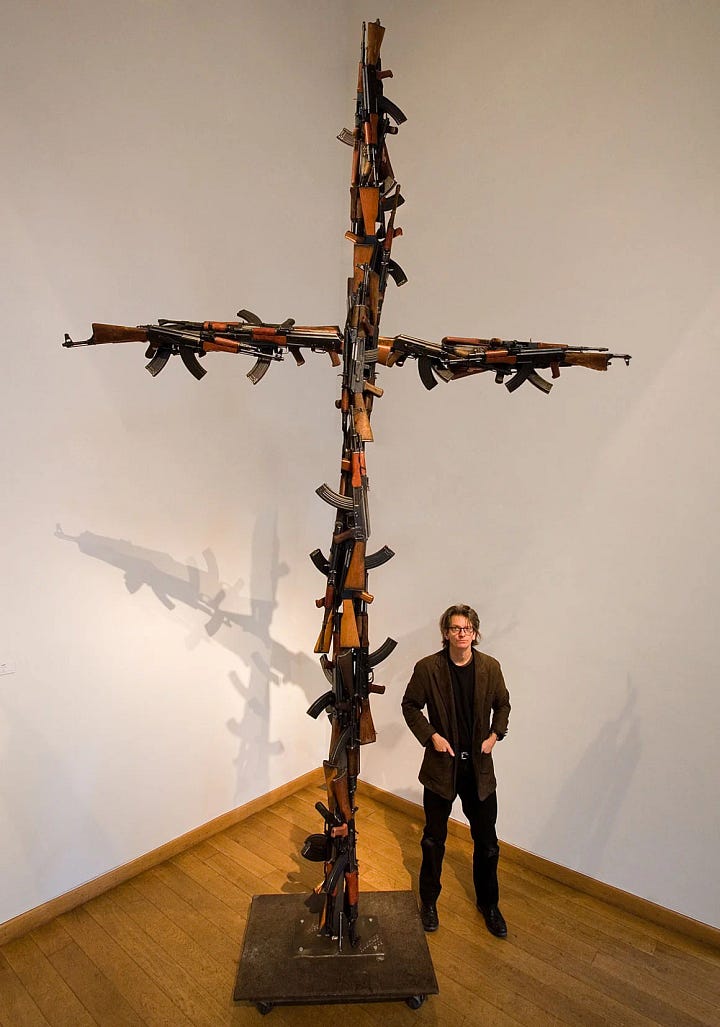
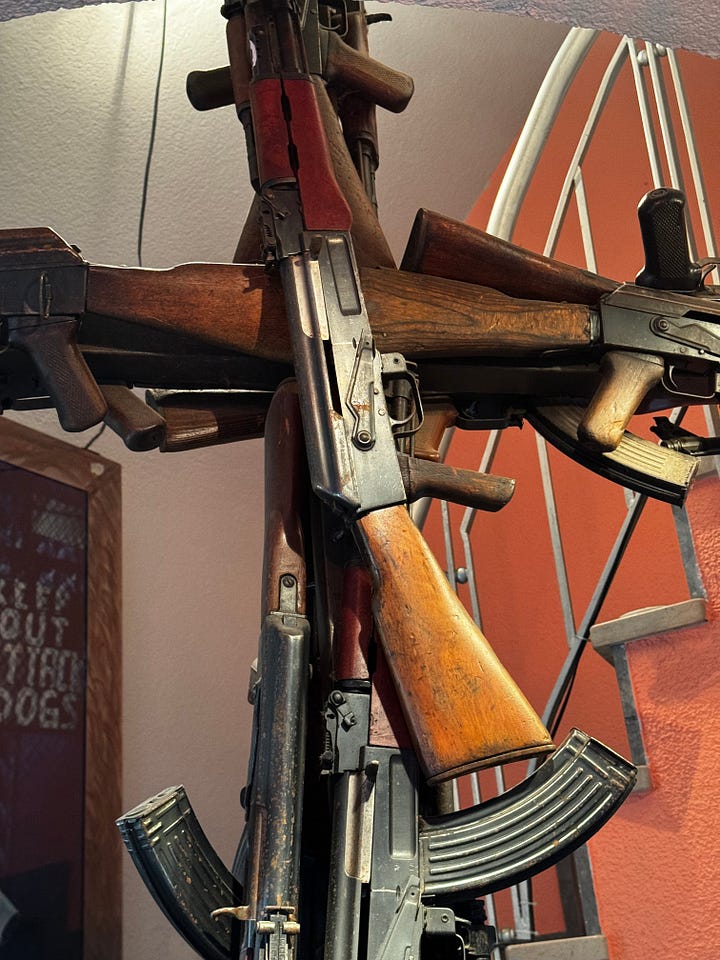

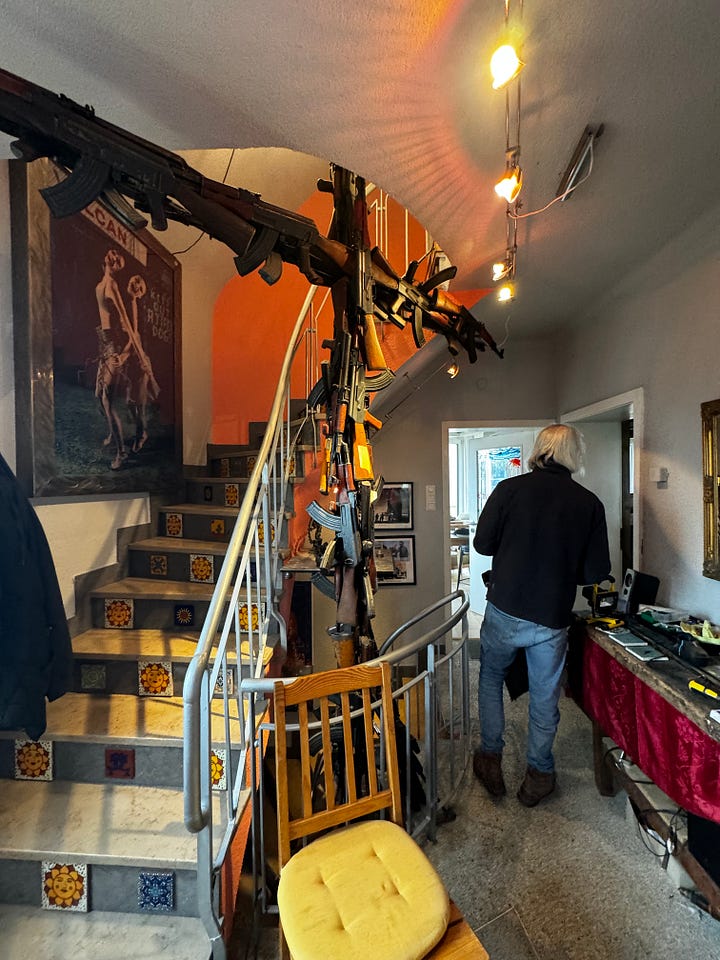
Almost endless projects are everywhere around his three-story house in varying stages of completion. There are way too many to mention here. However, one project I want to mention is the Wall of Life Jackets Johanneskirche Syrian Refugee Project 2016 / 2018, which my co-author Andrew Wakeford was involved in. Actual discarded life jackets were obtained from the beaches in Greece used by the Syrian refugees (adults and children) and assembled in a church in Saarland, Germany, 2016 - 2018 for an exhibition using the life jackets that filled the center aisle and spilled up onto the altar. Fred and Andrew Wakeford took the photographs and Andrew wrote the short stories for the exhibition.
Fred George is unique, and the world is blessed to have his thoughts and views using art. Fred is almost obsessed with the injustices in the world but is not afraid to call them out and make people think differently about atrocities and political injustice.
I like to think of Fred as an almost fully polished diamond--but not quite. Some people want the fully polished version of an artist, while others, like Andrew Wakeford and I, see his vast potential and want to empower him. We need more visual voices like him.
My final thought: I hope Fred's acceptance, work, focus, and value are fully discovered during his own lifetime. It would be a shame and his efforts are too important to be wasted. I can think of many famous artists from the past whose work was never fully appreciated while they were alive but suddenly becomes valuable after they are gone. Fred’s focus on peace should not be wasted. Let’s avoid this fate by getting the word out now!
I'm enclosing links to Fred George's website. I encourage all to look at his work.
Website: https://www.fredgeorge.com
If this story is truncated in your email, readers can click on "View entire message" and they'll be able to view the entire post in their email app.




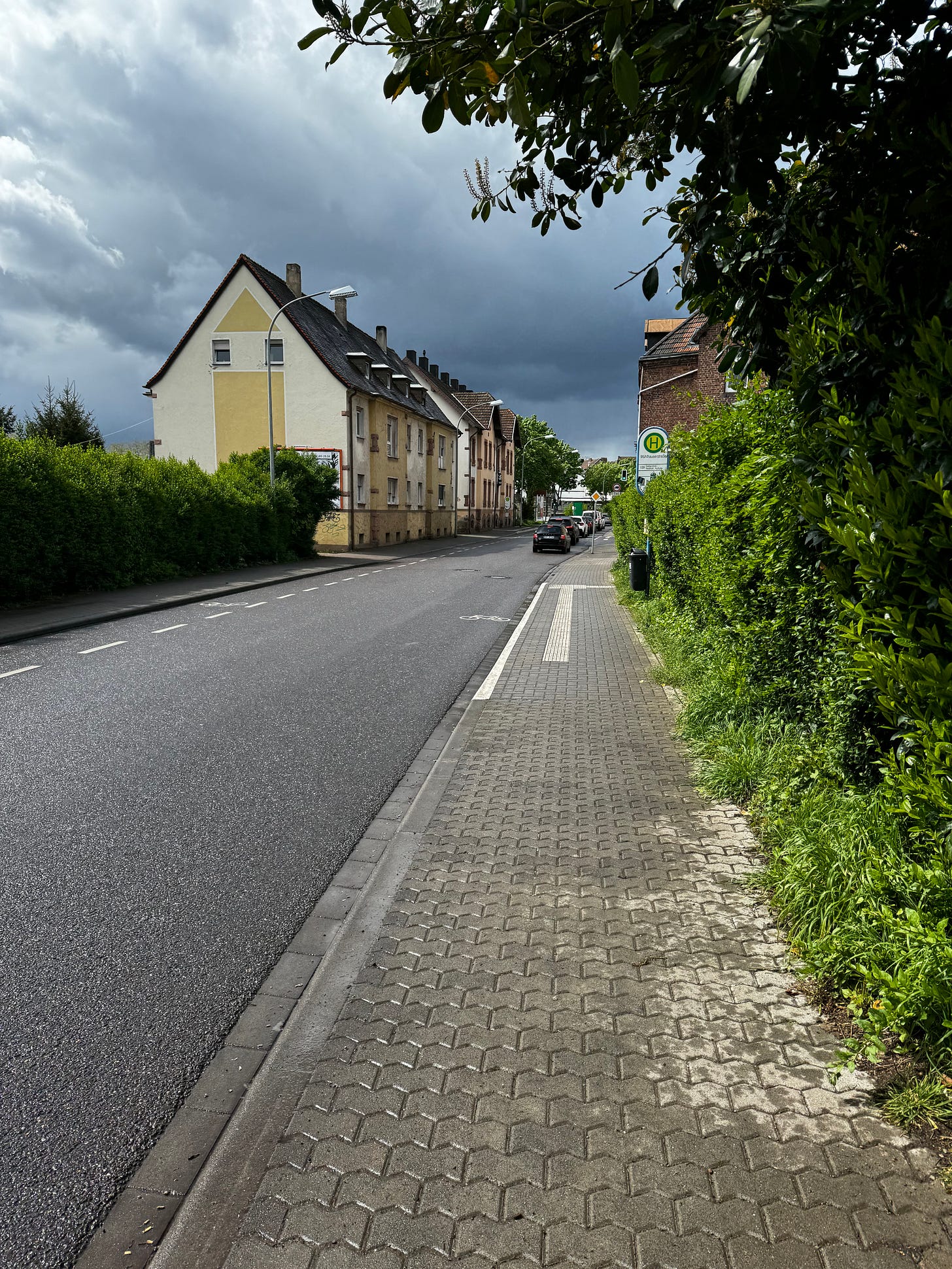
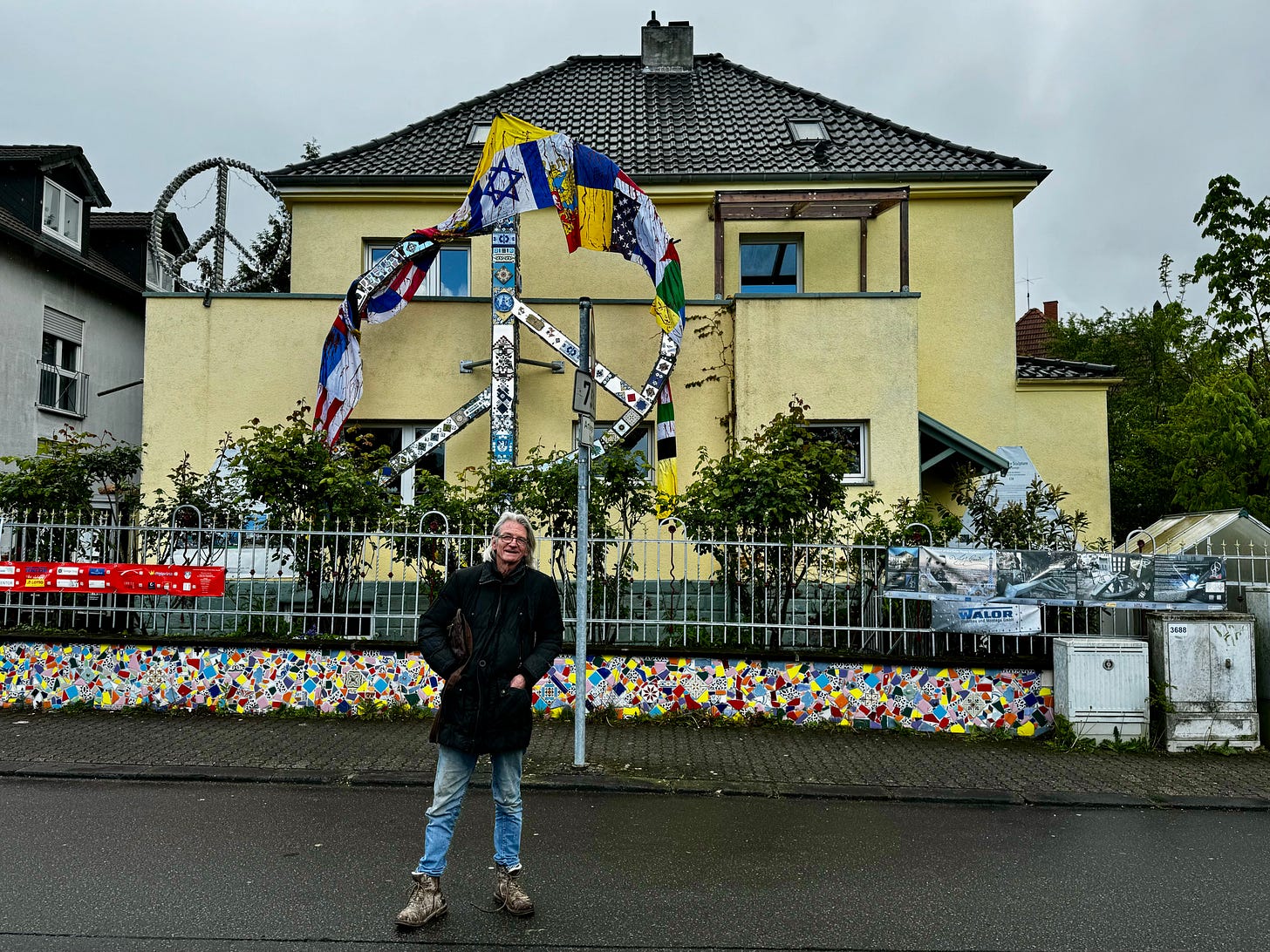


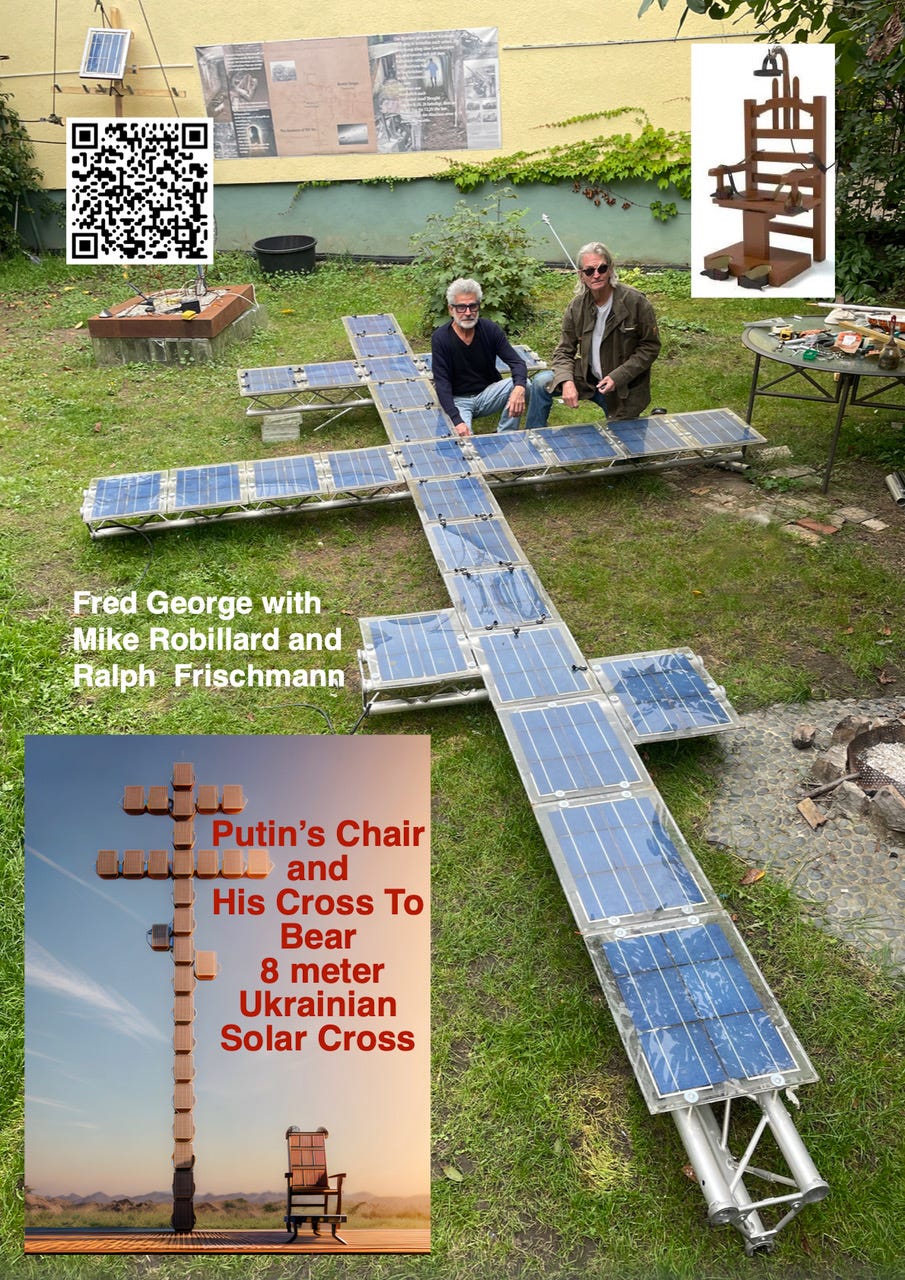




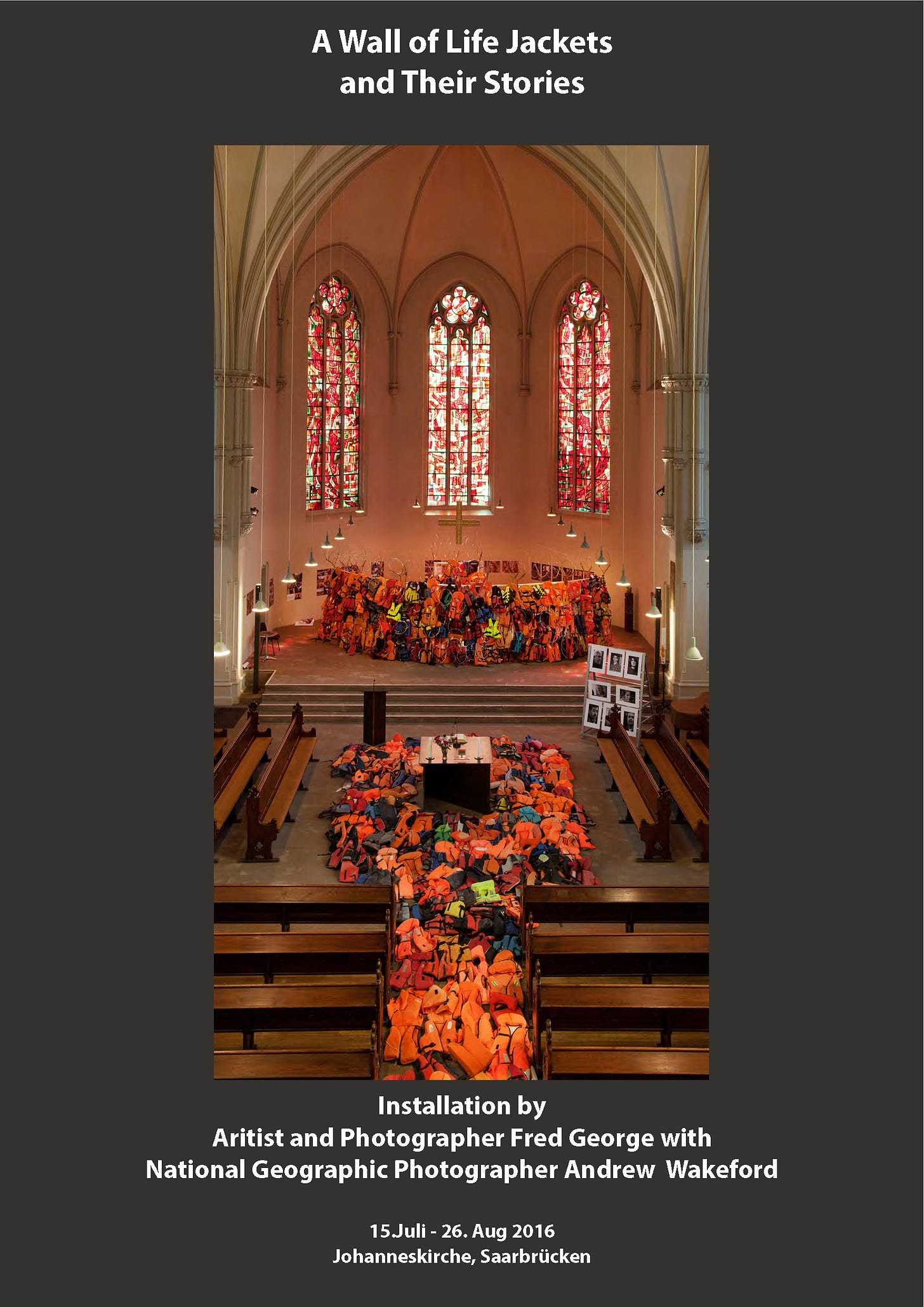
Fred is m buddy and i he is are Art 💯👅
Thanks for your reply! Fred is one fantastic man whose story needs to be told!